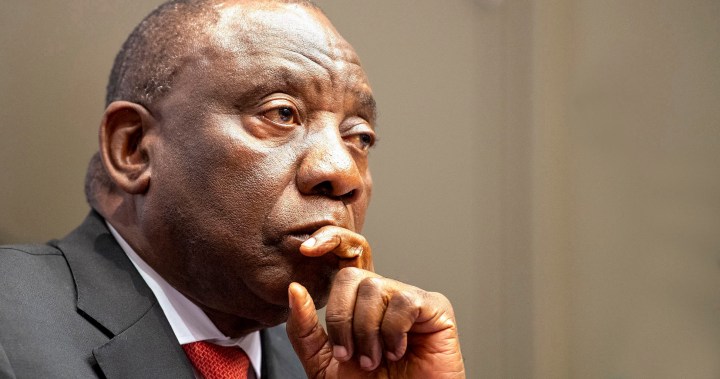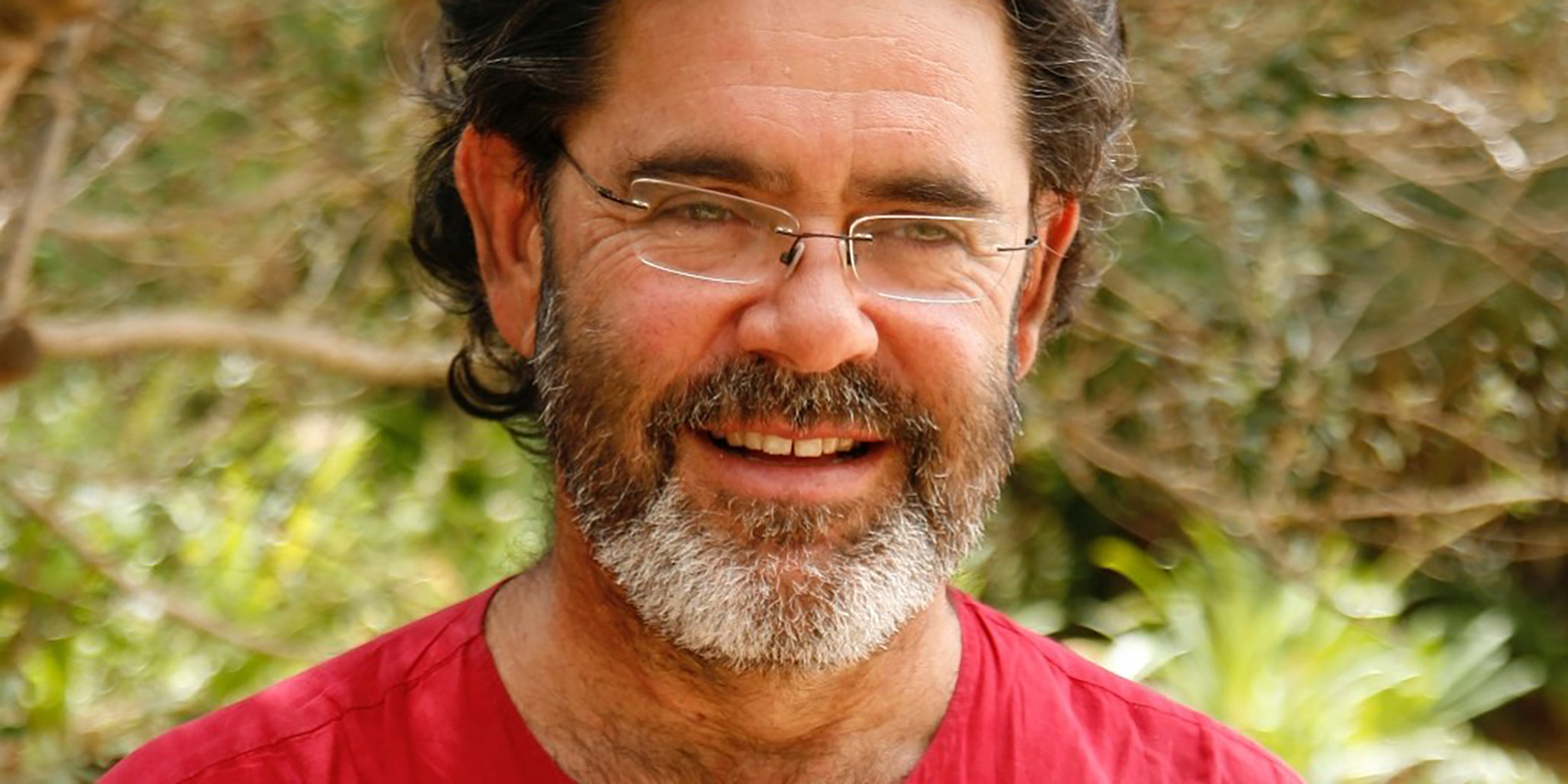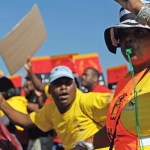POWER CRISIS
Ramaphosa’s electricity plans ‘significant’, says energy transition expert Mark Swilling

President Cyril Ramaphosa’s new plan to address South Africa’s electricity crisis has been widely panned in the media as being ‘too little too late’ or lacking details or timeframes, but Mark Swilling, co-director of the Centre for Sustainability Transitions at Stellenbosch University, disagrees.
‘There are detailed plans which lie behind the speech, which was very much part of creating a framing and a public narrative,” Swilling told a webinar organised by the Centre for Sustainability Transitions (CST) and the South African Institute of International Affairs on Tuesday.
Ramaphosa’s proposals to increase energy security and end rolling blackouts were significant, he said. Particularly significant was the full support he showed for the Eskom leadership and management, “in the face of a fairly widespread set of calls, not always in good faith, for the resignation or firing of Andre de Ruyter as chief executive.”
Standalone generation
One of the key shifts in policy was Ramaphosa’s lifting of the ceiling on standalone electricity generation.
“There are 83 projects in the pipeline, for 6.2 Gigawatts (GW) or 6,200MW,” Swilling said, “and the investment required for that is about R76-billion, none of which will cost the state a cent. In an economy which is crashing and unemployment soaring, that is a very significant investment.”

Mark Swilling, co-director of the Centre for Sustainability Transitions at Stellenbosch University. (Photo: Supplied)
Swilling also found it significant that Ramaphosa doubled, to 5.2GW, Bid Window 6 for independent renewable energy producers. “If you add the 5.2GW and the 6.2GW, it’s well over the 10GW which the National Planning Commission called for.”
Swilling welcomed Ramaphosa’s unlocking of rooftop solar power by announcing that businesses and residential owners would be allowed to sell their surplus solar electricity to Eskom.
He praised the President’s announcement that SA would buy surplus electricity from other regional countries such as Zambia and Botswana through the Southern African Power Pool.
He welcomed Ramaphosa’s commitment to fixing Eskom’s largely rundown power stations with more funding — though he said “it’s not clear where that’s going to come from”.
Swilling also highlighted the fact that the National Treasury was working on a solution to Eskom’s massive debt of nearly R400-billion. Ramaphosa said the proposed solution would be unveiled in October.
He also liked Ramaphosa’s endorsement — though he said the president didn’t use the word — of “wheeling” across the grid which allows small independent power producers to use the Eskom grid to reach distant customers.
State Capture
Swilling was also impressed by Ramaphosa’s direct reference to the impact of State Capture and corruption on energy generation and his description of visiting the Tutuka power plant which he said had been seriously damaged by theft and sabotage.
Swilling said Tutuka was a relatively young power station and yet could only achieve a 30% availability factor — meaning it could produce only 30% of its power capacity — “which is absolutely horrifying”.
Swilling said if one added all of these to Ramaphosa’s announcements of new energy governance measures, a national energy crisis committee, a one-stop shop where all the decision makers on electricity would be in the same room, and special legislation to enable this greater coordination, “it does suggest a new political settlement, an intra-state political settlement with broader stakeholder support.”
Challenges
But there were also challenges in Ramaphosa’s plan, Swilling said. The electricity grid would not be able to take all the additional power generation and would need “massive expansion.”
Sabotage would now increase, though would hopefully be constrained by the greater security and police action Ramaphosa announced.
The President announced that the 2.6GW of renewable power procured through Bid Window 5 would start kicking in from 2024. But Swilling said there was very little chance this would happen as the prices locked in last year through the auction process were too low — particularly in the light of the impact of the Covid pandemic and the Russian war against Ukraine which had disrupted shipping and global supply chains and increased the prices of inputs into renewable energy power plants which had made them unaffordable.
“And then there’s the question of whether this political settlement will hold. I don’t think the minister of energy and mineral resources (Gwede Mantashe) was too happy with the outcome,” Swilling noted.
Coal exports
Swilling noted that the Ukraine invasion had triggered an “absolutely stunning” increase of 40% in South Africa’s coal exports to European Union countries between January and May this year. This huge spike in demand was caused by Europe reopening some of its coal-fired power stations to deal with the short-term crisis provoked by the war and the decision to stop coal imports from Russia by August.
The coming European winter was going to be very challenging, Swilling said, also because gas reserves were not as high as originally anticipated, partly because more gas was being used for air-conditioning in the current heatwave.
But while South African coal mining was benefiting from the increased exports to Europe, these were also pushing up coal prices in South Africa and increasing energy costs which had already risen from R1.33 per Kilowatt/hour to R1.46.
Renewable energy
A 40% increase in the price of equipment for renewable energy plants had made the projects in Bid Window 5 unaffordable because of the low electricity prices which had been locked into them. Only one of the projects had reached financial close, Swilling said.
That was putting a lot of pressure on the government to relax the local content requirement for the renewable energy plants, which was why Ramaphosa had announced a relaxing of this requirement on Monday, Swilling suggested.
He questioned this, suggesting that local content requirements offered the opportunity for renewable energy production to be a major boost to South African industrialisation and job creation.
On the larger question of whether the war in Ukraine would help or hinder the world’s move away from fossil fuels towards renewables, Swilling suggested it would help.
He noted European coal-fired generation had gone up 13% in 2021 even before the Russia-Ukraine crisis as a response to the need for economic recovery after the Covid pandemic. Coal-fired power generation had accelerated after the war started.
Carbon emissions were up by 6% in Europe, according to the International Energy Agency, to 36 billion tonnes, the highest yet. And yet at the same time, renewables in 2021 generated 8,000 terawatt hours, the highest yet, 500 terawatt hours higher than in 2020.
Easter package
Swilling said that in Germany, despite its increased imports of coal from South Africa and elsewhere this year and its reopening of coal-fired power stations, the governing coalition had unveiled an “Easter package” of measures which constituted an “absolutely remarkable acceleration of renewable energy”.
The aim was to be 100% renewable energy by 2035, to be net zero in carbon emissions by 2045. The plan included 22GW of solar per annum starting in 2026 and 10GW of onshore wind per annum starting in 2025, making 32GW per annum of new renewables through to 2035.
“In South Africa we are talking about between five and 6GW of renewables in more friendly conditions in terms of wind and solar. And more land. So 32 is extremely ambitious.”
The Easter package was triggered by the Ukraine crisis, Swilling said, suggesting that once Germany and other European nations had got over the temporary energy shortage provoked by the war and by sanctions on Russian energy, they would greatly accelerate towards renewable energy.
Gas
Dr Olena Pavlenko, a deputy head of the Extractive Industries Transparency Initiative multi stakeholder group and President of DiXi Group Think Tank in Ukraine, said Russia’s war against her country had pushed up gas prices which would remain high.
This would prevent countries from relying on gas as the main source of energy and accelerate the shift to renewables.
Nevertheless, the global shortage of gas would boost investment in African gas production.
Swilling noted there was a strong movement across Africa to invest in gas as a baseload energy source, in part because African countries saw gas as their own energy source.
Yet if gas took off in this way the Paris climate change targets would never be met, he said, and the economic costs of shifting to gas — in part because it was an energy commodity traded in US dollars — would also be very great for Africa. DM

















 Become an Insider
Become an Insider
Subsidies for domestic solar installations have been glaringly overlooked.